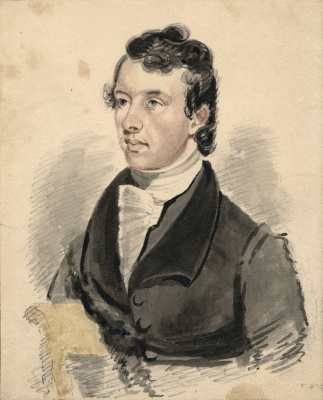Difference between revisions of "Template:Westarctica.wiki:Today's featured article"
Westarctica (talk | contribs) |
Westarctica (talk | contribs) |
||
| Line 1: | Line 1: | ||
[[File: | [[File:Dr Eights.jpg|300px|left]] | ||
'''[[ | '''[[James Eights]]''' (1798–1882) was an American explorer, scientist, and artist who joined one of the earliest expeditions to [[Antarctica]]. He was born in Albany, New York, the son of physician Jonathan Eights and Alida Wynkoop. James also became a physician and was appointed an examiner at a local engineering school which is now known as Rensselaer Polytechnic Institute. | ||
Upon the recommendation of Amos Eaton, who called Eights "one of the most competent geologists in North America", Eights obtained the position of naturalist on the first voyage of discovery made outside the United States. He was a member of the "South Sea Fur Company and Exploring Expedition" of 1829. This was a private enterprise organized by Jeremiah N. Reynolds. The expedition included two brigs, ''Annawan'' and ''Seraph'', commanded by Benjamin Pendleton and Nathaniel B. Palmer respectively, plus the schooner ''Penguin'' commanded by Alexander Palmer. | |||
'''([[ | Eights made observations of the flora and fauna in the lands reached by the expedition, which included Patagonia and Staten Island. He was the first to describe a trilobite fossil found on the South Shetland Islands in the [[Antarctica|Antarctic]], a pycnogonid, and the presence of glacial erratics. | ||
'''([[James Eights|Full Article...]])''' | |||
Revision as of 02:14, 3 March 2019
James Eights (1798–1882) was an American explorer, scientist, and artist who joined one of the earliest expeditions to Antarctica. He was born in Albany, New York, the son of physician Jonathan Eights and Alida Wynkoop. James also became a physician and was appointed an examiner at a local engineering school which is now known as Rensselaer Polytechnic Institute.
Upon the recommendation of Amos Eaton, who called Eights "one of the most competent geologists in North America", Eights obtained the position of naturalist on the first voyage of discovery made outside the United States. He was a member of the "South Sea Fur Company and Exploring Expedition" of 1829. This was a private enterprise organized by Jeremiah N. Reynolds. The expedition included two brigs, Annawan and Seraph, commanded by Benjamin Pendleton and Nathaniel B. Palmer respectively, plus the schooner Penguin commanded by Alexander Palmer.
Eights made observations of the flora and fauna in the lands reached by the expedition, which included Patagonia and Staten Island. He was the first to describe a trilobite fossil found on the South Shetland Islands in the Antarctic, a pycnogonid, and the presence of glacial erratics.
